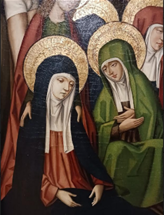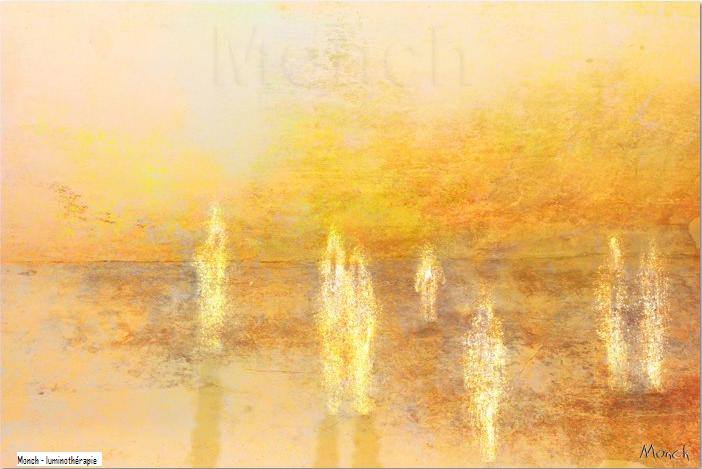Losing the Mysticism

I was raised a Roman Catholic, and then I grew up.
For the most part I find Paul in Corinthians to be despicable, but there is one verse — 13.11 — that I can get behind. Here is the King James Version (which I prefer because I like the flavour of the language used there):
When I was a child, I spake as a child, I understood as a child, I thought as a child: but when I became a man, I put away childish things
So, along with Santa Claus, the Easter Bunny, the Tooth Fairy, and several other childhood pleasantries, I moved away from Catholicism and dogma in particular.
I am not a Catholic. I am not a Christian. In general, I dislike all monotheistic faiths, finding them leaning heavily towards “othering”. But that is another long conversation.
Still, I miss the magic of Santa, hunting eggs at Easter, and the thrill of finding money left under my pillow by the Tooth Fairy. And I still feel a certain twinge of nostalgia for the rituals and stories of the Catholic Church.
Some people describe themselves as being “recovering Catholics” or suffering from “Catholic guilt”. Although I cannot blame or judge them for this, I do not share those sentiments.
In fact, our Church was a rather easy-going affair despite the formality of the Mass. Our parish priests were jolly rotund fellows; one was a French Canadian (by the strangest of coincidences he was a childhood neighbour of my mother, both growing up in a rather distant town) and the other an exuberant Irishman. They would occasionally visit our home, perfunctorily bless a few rooms, and then my parents would break out the whisky and gather around the piano. The Irish priest would bring out his fiddle and both clerics would sing raucous folk tunes while getting just a little plastered.
When I was very young, the Vatican had not yet “updated” the liturgy and — shall we say — the rules of the Mass. The Mass seemed endless — at least two hours. The women and girls covered their heads with hats or kerchiefs, and they wore fancy gloves. Men were hatless, as prescribed by the Church. All were dressed in their “Sunday best”.
Entering the church, one delicately dipped one’s fingertips into the holy water; sloshing about was frowned upon. With dampened fingers, one made the sign of the cross (the basic 4-point sign — forehead, mid-section, one shoulder and then the other; no kissing of the fingers as they do now) and genuflected before the altar.
In our Church the pews were old and made of some sort of hardwood. They were polished to a burnished dark brown, and smooth from hundreds of hands that had slid along them. The kneelers (also called genuflexorium — such an elegant word!) tucked into the back of the seats had no cushioning in the earlier days.
The Mass was celebrated in Latin. There was Latin chanting. I didn’t understand most of it, but as a child I did know “agnus dei”, “ora pro nobis”, and a few other bits and pieces. In my mind, the “Agnus dei - Lamb of God” was a “Mary had a Little Lamb” sort of creature, which I somehow vaguely associated traipsing about with the Easter Bunny. The chanting seemed to me like magical exhortations, spells, mystical cries from our mundane to another sacred world.
There was a large cross behind the altar, with a moderately lurid crucifixion; appropriate to this religion, which is essentially a cult of the dead.
Elegantly and ceremonially clad priests (in our Church these were the now presumably sober Frenchman and Irishman), would conduct the proceedings while assisted by white cassocked altar boys. Altar bells would ring at various intervals, my favourite being those announcing the imminent transubstantiation of the host and the wine into the body and blood of Christ (which also and more importantly signalled that we were in the home stretch of the Mass). Truly a magical death cult, complete with cannibalism. What child wouldn’t thrill to it?
The altar had candles, lit for mass, softly glinting in the demi-illumination of the altar.
Clouds of incense wafted about the Church. The perfume is unforgettable — frankincense and myrrh.
Let’s pause a moment to reflect upon the olfactory magic. Frankincense is a resin and is sweet, a little citrus-like and reminiscent of pine. Myrrh is more complex. It is richly redolent with a smokey and bitter undertone. It is absolutely recognizable — “eau de church”.
Burning of incense has a long history in the Catholic faith, and is deeply imbued with mysticism. According to tradition, the smoke itself purifies the air (not unlike First Nations’ smudging) and it also represents prayers wafting heavenward (similar to Buddhist prayers being recited while burning incense).
I vividly recall the priest swinging the censer (more properly called the “thurible”) where the smouldering incense would create swirling and billowing clouds, both a visual and an olfactory delight.
How cleverly mystical! All the senses involved in the mass — sight (the vaulting structure of the building, the stained-glass windows, the gory artwork), sound (bells, chants, Latin, creaking of the kneelers being moved up and down, the echoing of the church itself), scent (incense and wood polish), taste (the host or communion wafer dissolving on your tongue), and touch (the smooth feeling of the pews, the minor discomfort of kneeling).
Not that it often came up in conversation with childhood friends, but when I did hear about various Protestant church services, I would feel both surprised, and sorry for my peers. Where were their rituals, their angels, their magic water (that you could take home in a canning jar to sprinkle around your home), the mystical consecration of the priest’s fingers that allowed him to touch the cannibalistic host, the candles, the bells, the chanting? Where was their enchanted dark booth where one could confess behind a wooden screen and be forgiven their sins? Where were their wonderful and untamed saints who ran wild in the desert and suffered horror-movie style torments for their convictions? Where were their Holy Cards depicting the deliciously shattered lives of the martyrs?
How tedious and how mundane their Sundays must have been.
My parents stopped attending Church sometime after my Confirmation, so likely in the mid to late 1960s, shortly after the modernization of the Mass. I don’t know precisely their reasons.
As part of the Confirmation ceremony, each child would choose their confirmation name. I chose “Veronica”, but not because I particularly liked her story. Still, it was a good and uncomplicated one: Veronica (meaning “true icon”) supposedly wiped the sweat from Christ’s face while he was carrying his cross to Calvary, and the image of his face was miraculously transferred onto the cloth.
My true reason: Veronica was the 'cool girl' in the Archie comics (Ah… I should have disclosed this in the confessional and said an outrageous number of Hail Mary’s to have this venal sin forgiven).
That was my final childhood sacrament — flouncing about in a fancy white dress, new white lace gloves, new white shoes and stockings, and a new white hat with a pretty veil. All the little girls were similarly attired, and the boys were in little black suits. The bishop (not a mere priest for this occasion) said an interminable mass, and then we all marched up to the altar rail, knelt and had our foreheads anointed with oil. The oil is called “chrism” and is usually just cooking oil, but a little balsam essence is added to it. Clearly the Church understood the transcendent power of scent to create strong emotions and recollections.
But now, occasionally having to attend some Catholic function, I find the magic has dissipated.
The bells and candles are fewer, the pews are newer, the incense is sparser, the language is vernacular. It feels as though the essence of the thing, what might have been sacred or holy, has been lost.
I miss Santa. I miss the Easter Bunny. I miss the Tooth Fairy. But most of all, I miss the essence of the mystical.
Would you like to read other posts? If so, please click the Home Page link below:

You, Dear Reader, are much needed and appreciated.
Everything written requires a reader to make it whole. The writer begins, then you, dear reader, take in the idea and its image, and so become the continuation of its breath. Please subscribe so that my words can breathe. Consider this my hand, reaching out to yours.
